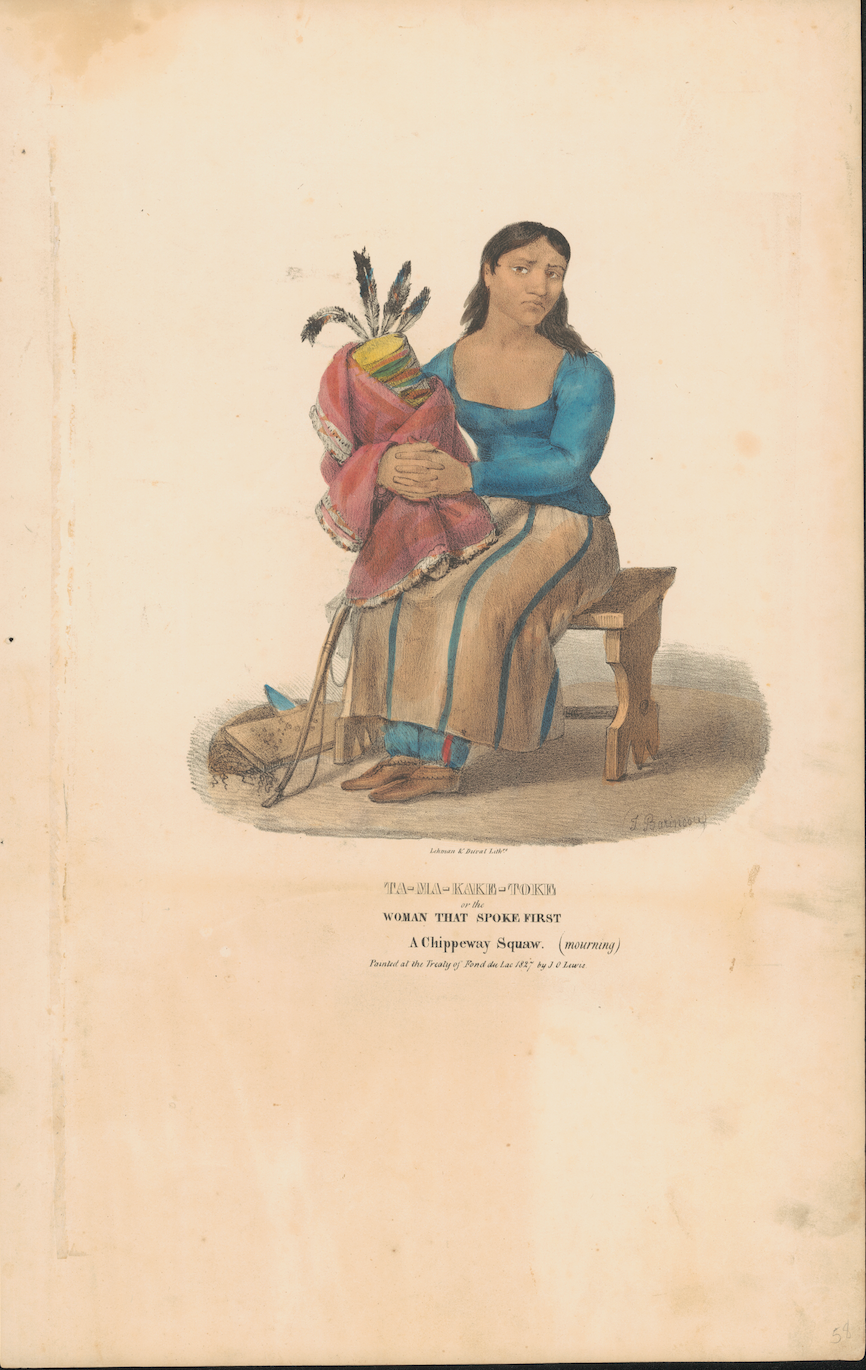By Nickolas Szczechowski
During the 1800’s in the United States, many Native Americans were forced by white settlers to assimilate into white culture. As white settlers fought Native American tribes to seize their territory, the U.S. government commissioned artist James Otto Lewis to paint portraits of Native American chiefs who signed coercive treaties with the federal government. These portraits painted by Lewis are known as the Aboriginal Port-folio. One of the portraits in the collection was of a Native American woman, titled “Ta-Ma-Kake-Toke or the Woman That Spoke First: A Chippeway Squaw. (mourning).” Despite the violence behind the portrait’s creation, the painting of Ta-Ma-Kake-Toke also illustrates how Native Americans survived the brutal processes of displacement and assimilation by staying connected with their family and culture.

The image above shows Ta-Ma-Kake-Toke clutching the belongings of her deceased husband. This image mainly represents her pain in loss but dignity at the same time. By keeping the items of her husband with her, she finds a way to stay connected with him even though he is no longer with her. Lewis also depicts Ta-Ma-Ka-Toke as a powerful figure with her straight posture and stern facial expressions. This visual aid helps portray the message that Ta-Ma-Kake-Toke will persevere through this hard time.
While a viewer of the image can believe they understand the message behind the picture, Lisa Falk notes, “every portrait represents only a moment in time, a fragment of an event, a split second of a person’s life and a record of the photographer’s perspective on a subject” (240). The power that a photographer (or in this case, an artist) has over their subject influences the audience to think a certain way. When viewing a portrait like the one above, we need to keep an open mind and consider it from multiple perspectives. From one perspective, Ta-Ma-Kake-Toke could be viewed as part of a collection of objects belonging to her deceased husband, and we might assume that Lewis objectified her. On the other hand, the objects in the portrait signify cultural pride and Ta-Ma-Kake-Toke’s esteemed status within her community. The uncertainty and mystery behind the message in the image of Ta-Ma-Kake-Toke makes the image a very interesting piece to dissect.
Native Americans were stripped of their homeland while also enduring cultural assimilation at the time. Archival sources, such as documents or images like the one shown above, are a useful resource for today’s generation to gain a better understanding of important issues like broken treaties. Today’s society needs to learn about these past occurrences and use the knowledge gained to evolve. While there is no way to erase the many painful memories endured, the portrait helps the audience bear witness to what occurred.
Citations
Lisa Falk, “Native American Portraits: Points of Inquiry curated by Daniel Kosharek, Diane Bird, and Andrew Smith (review),” The Journal of American Folklore, Vol. 129, pp. 240-243, (2016)
